Kingdom Hearts HD 2.5 ReMIX Original Soundtrack
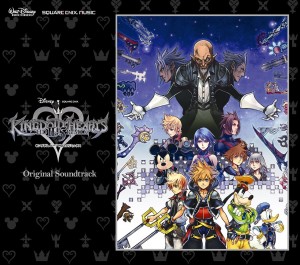 |
Album Title: Kingdom Hearts – HD 2.5 ReMIX – Original Soundtrack |
| Record Label: Square Enix |
|
| Catalog No.: SQEX-10469/72 |
|
| Release Date: November 26, 2014 |
|
| Purchase: Buy at CDJapan |
Overview
The Kingdom Hearts 1.5 and 2.5 ReMIXes came with a collection of games that spanned several consoles all condensed onto the PlayStation 3 and remastered with high-def graphics and an soundtrack reorchestrated with live instruments. The captivating storyline of the games, which revolve around Sora and his quest to visit various childhood worlds to vanquish the “heartless” forces that engulf their victims in shadow, borders on innocent, but maintains a deeper quality than that. Fans were enchanted with the series since Square Enix released the first Kingdom Hearts in 2002. The original score, composed by the now-legendary Yoko Shimomura, while receiving an extremely positive and enthusiastic response, struggled in its original instrumentation, sometimes failing to completely convey the ranged emotions of the scores due to the often-rough PlayStation 2 music generator. The score was still a massive success, but was also a significant part of a video game music cover trend that began shortly after the release of the first game. I have to think that this was, in some part, due to the realization of Kingdom Hearts fans who wanted something more regarding the instrumentation of the game. I was very much looking forward to receiving a copy of the score (along with the ReMIXes themselves), and was glad that the soundtrack met my expectations for the revamped music.
Body
One of the best parts of the Kingdom Hearts II soundtrack is its colorful array of boss battle themes that show up throughout the game. “Tension Rising” is a miniature boss theme that appears several times for smaller fights throughout the game. Like “Fragments of Sorrow,” “Tension Rising” is able to more fiercely bring out all the harmonic percussive layers with the live instruments, and illuminate vocal lines that simply didn’t show up on the recording before. In such a repetitive piece, the slightest instrumental changes are doubly significant, and as a piece with such subtle instrumental shifts, the live instrumentation makes the piece so much more fun. Not only do the bass lines stand out more, and the various pitched percussion like vibraphone and piano add bright bursts of color in a way that they did not previously, but so do new parts that I didn’t even realize existed in the original. As the instruments pause momentarily just before the main motif, a brief glissando in the low strings serve as a pick-up to the motif that adds to the building drama. One of the best parts of this piece is in Shimomura’s talent in looping a piece so that the break in the loop is difficult to discern, and as a result the piece sounds as though it’s constantly mounting in friction, despite the fact that one loop is barely over a minute in length.
“Desire for All That is Lost,” another repeated boss theme throughout the second game in the main series, benefits from live solo string instruments and, through an ambitious series of key changes, sets the melody to different timbres as it shifts from solo to soli. The new orchestration changes the balance of the piece as well; the end of the piece, which features a wild piano section, originally had the piano at the forefront of the mixture. In this recording, the piano is more equalized against a smoother and more measured full string orchestra. “Rowdy Rumble” brings a catchy and fast-paced melody to the pool of battle themes, this time on a clarinet. The melody is constantly repeated in different keys and settings, similar to the style of “Tension Rising” but with more melodic substance.
“Waltz of the Damned,” one of the regular battle themes, also has a much-improved string section with its new orchestra. Beginning with a resonant pizzicato, the piece becomes an elaborate pseudo-waltz with a beautifully harmonized melody line in the strings, so integrated with its sublayers that the effect is a gorgeous, shimmering cascade of high strings. “Dance of the Daring,” its equivalent battle theme, uses the strings in a much more subdued fashion, against flute and oboe soloists with a mix of background instruments, from harpsichord to chimes to a single female vocal line that begins the piece. The mildly Renaissance nature of these pieces work well with Beast’s Castle, the level these two pieces cover, and the world becomes an enjoyable, if dark, one, with appropriate accompanying music.
Outside of my list of favorite tracks, I also found that several new pieces stood out to me due to the new instrumentation – pieces I had not noticed before. “A Day in Agrabah,” was one such track, which I had always found somewhat insipid for reasons I couldn’t quite pinpoint. After hearing the orchestrated track in the HD score, I realized it was because the piece depended rather significantly on a solo, almost virtuosic, instrument holding the melody. The violin, and the following flute, that perform the main parts of this piece hold down some exquisite vibratos, trills, grace notes, and very small glissandos that don’t quite have the same effect when synthesized. In fact, each of these ornamentations is very slight, and but the nuances of the live instruments radically changes the effect of the piece of the whole, and I found myself wanting to spend more time in Aladdin’s world simply to get more of this piece. “Arabian Dream,” the matching battle music, brings the same violin and flute back with some additional percussion and harmony to continue the feel of Agrabah while upping the ante with the faster-paced rhythm. More instruments are added to give the melody a sense of layering and depth, giving the piece a dance-like quality, which is ultimately the goal of many of the battle themes, as the battle style itself becomes more and more dancelike as the game progresses, and Sora gains more and more skills and abilities.
“The Afternoon Streets” was another track that, while I certainly enjoyed, I never really found myself seeking out in the game. The secondary theme to Twilight Town, the world which is predominantly accompanied by the tranquilizing, mellow, guitar-and-oboe song “Lazy Afternoons,” is different from its parallel theme in being less, well, lazy, and instead more wistful on a series of metallophones. The piece begins on lower soprano notes, working its way up the major melodic scale in the fashion of some nursery rhyme. As the player is about to depart from Twilight Town for the last time, a delicate glockenspiel chimes out a melody against ambient strings holding down another melody, and a recurring oboe playing some tune wavering between the melody and the counter-melody. In this rendition, there is something heartwarming about the piece, whether it’s an air of innocence it suggests with its simple melody and down-beat rhythms in common time (such rhythmic normalcy is unusual for Shimomura), or its lack of percussion and brass or full orchestra in a score that tends to make use of every corner of the symphony hall in several of its pieces. Essentially every piece benefits in some way with the revamp, but this was one that really stood out for the upgrade that live instrumentation gave to a piece that was otherwise unchanged from its original form.
In addition to discovering that I actually enjoyed several tracks that I previously found a little bland, I also discovered a few new tracks that I had hardly noticed before. “Riku” was one such track; in the original album, the melody is certainly pretty, featured on both piano and cello, but obscured by a sort of synth sound that provided a harmonic structure to the piece. It was certainly nice, but I would not have even been able to pick out the track as belonging to Kingdom Hearts upon listening to it out of context. To a degree that drastically changes how I hear the piece, the remastered version brings to light several instruments I didn’t even realize were meant to be incorporated, including an exquisite acoustic guitar that delicately holds down chords as the cello and piano fluidly pass the melody back and forth. What I love so much about this piece is that it’s continuous. Like in “Tension Rising,” Shimomura demonstrates her acute ability to loop a piece so seamlessly that it’s not until several loops in the listener realizes the same minute of music has been playing over and over again. The resulting waltz is thoughtful, subdued, slightly melancholy, and yet content. The melody twists and turns, shifting constantly, making it difficult to predict a pattern, giving Riku the musical complexity that his mysterious character deserves.
“Other Promise” is something of a classic track from this score, but it was another one whose new instrumentation really made the difference for me. In the original game, I had always struggled to differentiate between this one and “Roxas’ Theme,” which begin the same way but end very differently, the latter with a simple loop and the former with a sweeping orchestral wave of harmony. Like “A Day in Agrabah,” this was one of those pieces I realized really needed a live recording for full effect. The flute from “Roxas’ Theme” is certainly sweet, but the real value in this piece is the rippling piano that both plays and accompanies the melody played on full high strings.
In fact, it wasn’t until going through the final tracks of the 2.5 album that I realized just how many pieces there were in the final world, in addition to “Other Promise” and “Riku.” The myriad of battle themes, from “Sinister Shadows” to “Deep Anxiety,” display a wide range of instrumental capabilities. “Sinister Shadows” is a mixed rhythm piece that evolves quickly from a series of percussion-and-strings beats piece to a more graceful, swaying melody without losing the distinct rhythm. It’s a surprisingly delicate piece, with moments of marimba and solo violin draped over the ebbing and flowing percussion. “Deep Anxiety” has a more constant rhythm and muted melody, almost ambient, featuring minor half-scales jumping from key to key. The piano is one of the most noticeable new instruments in the reorchestration, giving the pieces a kind of sophistication that simply didn’t exist before.
Many of the pieces are arrangements of other scores, including “This is Halloween” from Danny Elfman’s The Nightmare Before Christmas, and “Under the Sea” from Alan Menken The Little Mermaid, both of which are instrumental versions of the originally vocal songs, and copies of the same songs from Kingdom Hearts I. (I have to admit to some disappointment – since Sora journeys to from Halloweentown to Christmastown in Kingdom Hearts II, I was hoping for an instrumental version of “What’s This?” the first time I played the game, and found myself hoping for the same thing in the reMIX). However, the battle variation of “This is Halloween,” entitled “Spooks of Halloweentown,” takes one of the more nondescript and unnoticed motifs of “This is Halloween” and stretches it out to create the wonderfully haunting opening three notes of the battle, returning frequently throughout the piece. Another popular film score that makes it onto the soundtrack is Klaus Badelt’s score to Pirates of the Caribbean, which benefits in a far larger way from the fresh new instrumentation, given that Badelt’s original score featured an array of rough, nautical strings. “He’s a Pirate” is the battle theme for the world, and is in fact the only battle theme in the game taken from another source instead of Shimomura’s own creation. The arrangement is her own, however, and it gives a slightly lighter flavor to the already-rollicking piece. The world’s theme is “Blood Curse,” which sharply contrasts the piece using similar instrumentation, but a much slower and more delicately pulsing rhythm.
The ReMIX for 2.5 also contains reorchestrations of sundry collections of tracks for worlds like Atlantica and the airship, which contained what were to me some the mildest of the changes in the new soundtrack. Tracks like “Shipmeister’s Shanty,” “Blast Off!,” and “Android Attack” are all primarily electronic in nature, so apart from a clearer sound, the pieces are not all that drastically different from the original. Japanese versions of Arial’s Atlantica songs like “Swim this Way” and “Let’s Sing and Dance!” are included on the albums, but as these have always been vocal tracks, there isn’t too much of a change from the original versions.
Summary
On the whole, Yoko Shimomura’s score for the Kingdom Hearts 1.5 and 2.5 ReMIX editions is worthy of the original score. The new tracks did not surpass my expectations, but it did meet them. The value in this box set, while not entirely devoid in the larger pieces, is in the smaller ones that have perhaps not had as much time spent on them. I found that my favorite pieces to listen to were the ones that perhaps had less attention devoted to them over the past twelve years. For those interested in the score, the orchestration is a strict remastering of the original score, but does not add or significantly alter anything in the original music, beyond a few shifts in instrumentation and balance. However, the new instrumentation does seriously add to the quality of the already high-quality score, and the resulting soundtrack is even more vivacious and vibrant than the original.
Do you agree with the review and score? Let us know in the comments below!
3.5
Posted on March 1, 2015 by Emily McMillan. Last modified on April 26, 2015.

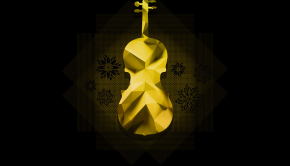
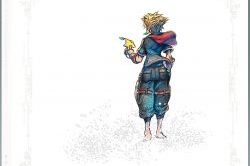
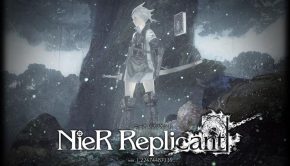
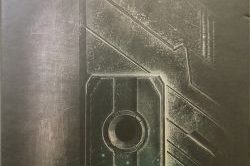










Excellent review!
I’m still playing through 2.5 so I haven’t heard all the new tracks, but I think most of the remasters so far are a breath of fresh air. Unlike KH1, I thought KH2’s music absolutely could use an upgrade, and the new tracks are just what I was hoping for. I think almost each one is a total improvement.
One of the very few exceptions for me was actually “Desire For All That is Lost.” I loved the piano solo, thought it was the highlight of the original, but here they muddied it up a little with that string accompaniment. Most everything else though, no complaints, it sounds so much better.